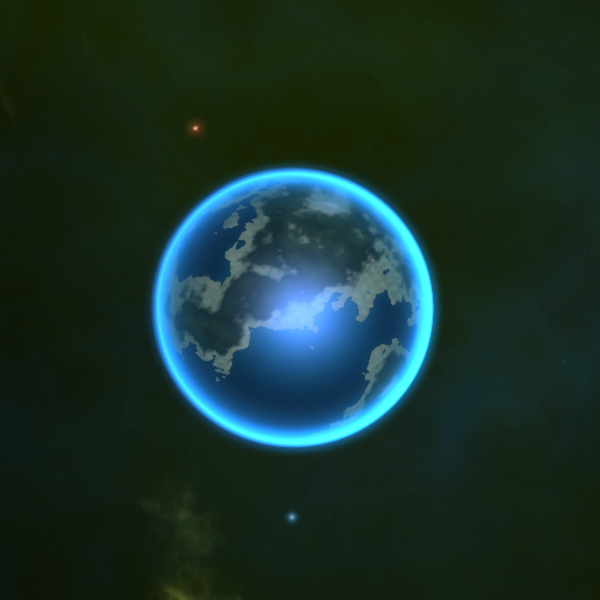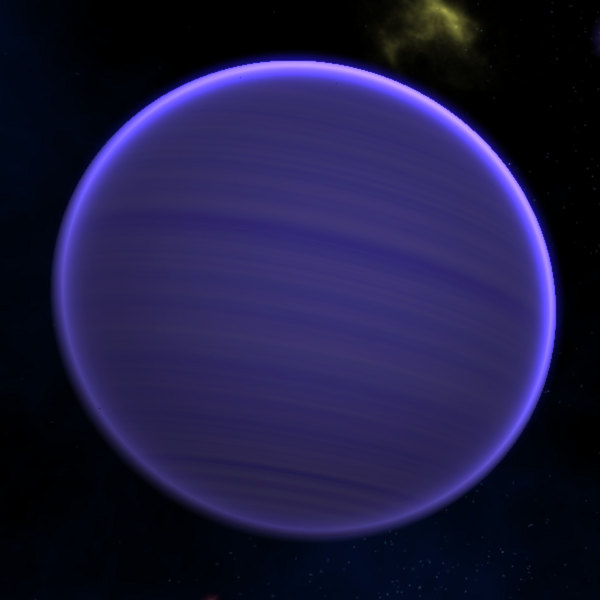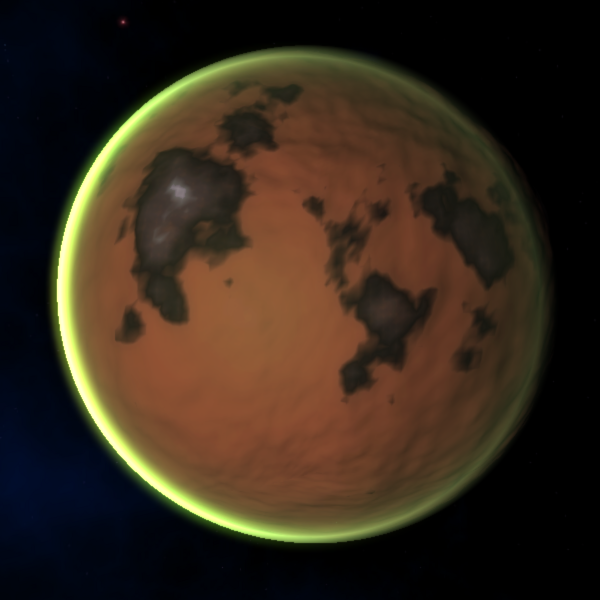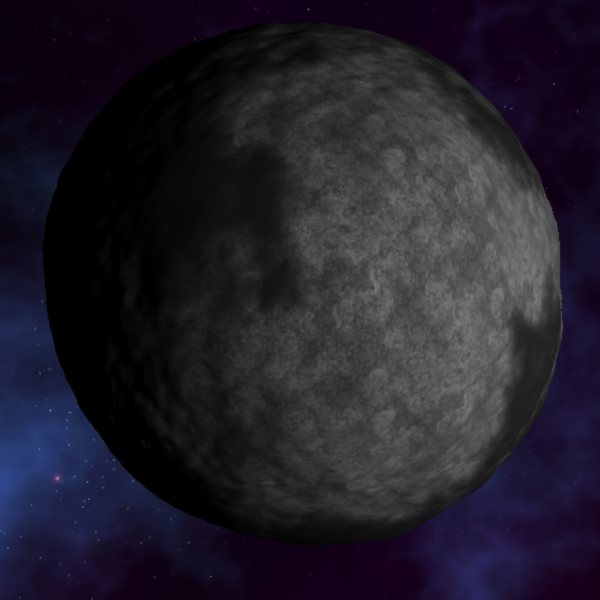Intro
I've always been fascinated by procedural content, the idea of just generating a world based on rules. However, procedural content has a way of making everything look kind of same-ey. Since I don't want everything to look the same, I am working hard to create diverse planets to populate this universe.
This article will go into the 5 types of planets I have implemented so far. These planets are not all equally common, as will be explained, and later on different kinds of planets will have different gameplay roles.
Planet Types
There are 5 types of planets, but there are 2 fundamental kinds of planets. The first type are the gas ones, which have no surface terrain. Secondly, there are the terrestrial ones, which have a fractal generated surface terrain. Ideally, I want to make the terrestrial ones matter later in the game by allowing you to fly around the surface between bases.
Terran
Lets start with the most glaringly obvious kind of planet to add: Earth-like terrestrials. They have lots of water, a blue sky, and vegetation.

Honestly, there isn't much to say about this one. We all live on one, it's nice outside, etc. This kind of planet is rare, only 10% of planets will be of this type. This roughly follows the distribution of our own solar system, with 1/9 planets being Earth-like.
Banded Gas
I personally find these really pretty. Unlike the terrestrial planets, these don't have a surface. They have a simple sphere with a texture and an atmosphere scattering layer. You can't land on one or fly around on one.

The atmosphere scattering color will always match the general color of the bands. The bands are drawn in multiple passes to get that effect, holding the color constant but varying the saturation. These planets are the most common, with 50% of all planets being banded gas. After all, in our own solar system we have 4 of them!
Martian
Yet another terrestrial planet, this one is typically bone dry and orange-ish in color. I'd be willing to bet you couldn't live here.

The atmosphere colors for this type of planet are very diverse, with all colors of the rainbow possible depending on what seed the planet got. These planets make up about 7.5% of the universe. There is a variant that has water on the surface which represents about 2.5% of the universe, so both kinds together add up to 10%.
Chthonian (Lava)
Doesn't this place look inviting? Yes, those are lava oceans and blasted rock mountains as a matter of fact. The bright and colorful atmosphere reveals the toxicity of the air.

I'd rather live on Mars personally. These lovely planets make up another 10% of the universe. I haven't implemented it yet, but I want the lava oceans on these planets to glow dull orange hot in the darkness.
Barren
These are the most common terrestrial planets in the universe, making up 20% of the planet population. They aren't much to look at, and have no atmosphere.

I want to use these for industry down the line. Their lack of atmosphere would make them readily accessible for mining, and would be a natural source of raw materials for manufacturing.
Future Types
I'm fairly satisfied with the work so far, but I want to add some snowball planets and maybe a class of planet with an ammonia based hydrosphere, which could theoretically support an ecosystem (it would look a lot like the terran one except with dark reddish oceans and black vegetation).
When these are added, they will cut into existing types. Terran will be reduced to 5% so the ammonia ones can have 5%, and chthonian will be reduced to 5% to make way for the ice planets' 5%.
Weather patterns, climates, volumetric clouds, and things like that are probably do-able but are low on the priority list at this time. That is polish to be added when the game is almost completed.



